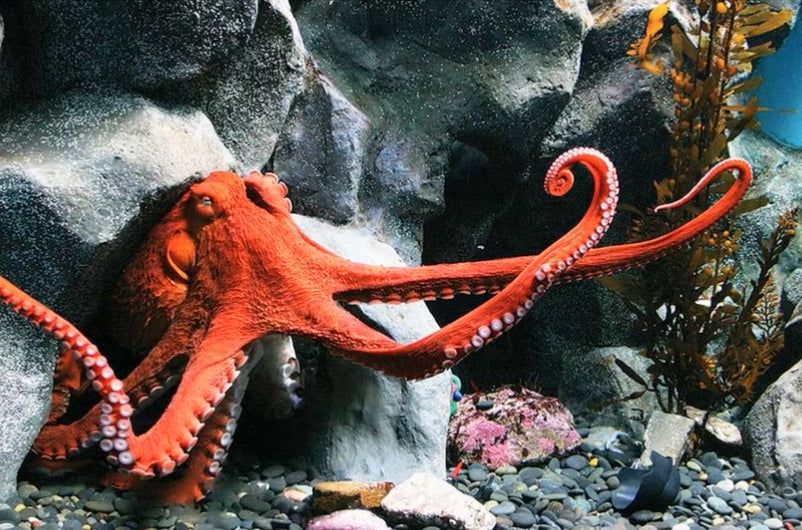The octopus has three distinct layers in its skin, and each layer contains remarkable tiny elastic sacs of red, yellow, and blue coloring. When threatened, the octopus can make each sac 60 times larger than its original size. An adult octopus can have as many as two million of these tiny spots of color spread over its entire body.
By shrinking some sacs and stretching others, an octopus can change color almost instantly.
For instance, when frightened, all of the sacs shrink, making the octopus white.
When angry, only the red sacs open, turning its whole body red.
When hiding in the green seaweed, it can mix blue and yellow to produce green.
When crawling on a gravel ocean floor, it turns to a salt-and-pepper color.
It can even make stripes and polka dots when resting on patterned backgrounds.
This ability to camouflage helps the octopus hunt for food and hide from its enemies. Is there any reasonable probability that this complicated mechanism could have evolved by chance mutations?
Research courtesy DiscoverCreation.org
